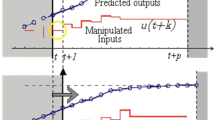Abstract
The presence of a biophase compartment in a pharmacokinetic model indicates that the response to an administered dose of drug is damped such that the time to peak effect occurs after the peak concentration in the bloodstream. This phenomenon, which is common to most intravenous anesthetic agents, can be exploited by a drug delivery method that administers minibolus doses of drug rather than a continuous infusion. Through analysis of the frequency response behavior of the biophase compartment, a bolus magnitude and dose frequency or interval (1/frequency) can be chosen such that the oscillation in drug effect is minimized even though the plasma concentration may be changing significantly with each supplemental dose. A pharmacokinetic and pharmacodynamic based method for calculating the bolus dose size and dosing interval is presented. The trade-off between dose interval and change in drug effect is exemplified through computer simulation of this strategy applied to delivery of the neuromuscular blocking agent pancuronium. The method provides a repetitive perturbation to the pharmacokinetic and pharmacodynamic system that can aid in model parameter identification during closed loop applications.
Similar content being viewed by others
REFERENCES
D. R. Raemer, A. Buschman, J. R. Varvel, B. K. Philip, M. D. Johnson, D. A. Stein, and S. L. Shafer. The prospective use of population pharmacokinetics in a computer-driven infusion system for alfentanil. Anesthesiology 73:66–72 (1990).
J. Schuttler, S. Kloos, H. Schwilden, and H. Stoeckel. Total intravenous anaesthesia with propofol and alfentanil by computer-assisted infusion. Anaesthesia 43(supp):2–7 (1988).
J. B. Bovill and F. H. M. Engbers. Computers in anaesthesia. In Wylie and Churchill-Davidson (eds.), A Practice of Anesthesia, 6th ed., Edward Arnold, London, 1995, Chap. 26.
L. B. Sheiner, D. R. Stanski, S. Vozeh, R. D. Miller, and J. Ham. Simultaneous modeling of pharmacokinetics and pharmacodynamics: Application to d-tubocurarine. Clin. Pharmacol. Ther. 25:358–371 (1979).
J. M. Bailey and S. L. Shafer. A simple analytical solution to the three compartment pharmacokinetic model suitable for computer-controlled infusion pumps. IEEE Trans. Biomed. Eng. 38:522–525 (1991).
A. V. Hill. The possible effects of the aggregation of the molecules of haemoglobin on its dissociation curve. Proc. Physiol. Soc. Jan. 22: vi–vii (1910).
J. Schwartzenbach and K. F. Gill. System Modelling and Control, 3rd ed., Halsted Press, New York, 1992.
S. L. Shafer, S. E. Kern, and D. R. Stanski. The Scientific Basis of Infusion Techniques in Anesthesia, Bard MedSystems Division, North Reading, 1989.
S. E. Kern and D. R. Westenskow. Development of a closed-loop delivery system for neuromuscular blocking agents given in intensive care. Proc. IFAC Symp. Modelling and Control in Biomed. Sys. pp. 172–174 (1994).
S. M. Rupp, K. P. Castagnoli, D. M. Fisher, and R. M. Miller. Pancuronium and vecuronium pharmacokinetics and dynamics in younger and elderly adults. Anesthesiology 67:45–49 (1987).
S. L. Shafer and K. M. Gregg. Algorithms to rapidly achieve and maintain stable drug concentrations at the site of drug effect with a computer-controlled infusion pump. J. Pharmacokin. Biopharm. 20:147–169 (1992).
M. Gibaldi, G. Levy, and H. Weintraub. Drug distribution and pharmacologic effects. Clin. Pharmacol. Ther. 12:734–742 (1971).
J. Norman, R. L. Katz, and R. F. Seed. The neuromuscular blocking action of pancuronium in man during anesthesia. Br. J. Anaesth. 42:702–710 (1970).
P. Bragg, D. M. Fisher, J. Shi, F. Donati, C. Meistelman, M. Lau, and L. B. Sheiner. Comparison of twitch depression of the adductor pollicis and respiratory muscles: Pharmacodynamic modeling without plasma concentrations. Anesthesiology 80:310–319 (1994).
Author information
Authors and Affiliations
Rights and permissions
About this article
Cite this article
Kern, S.E., Westenskow, D.R. Pharmacokinetic-Based Minibolus Delivery as an Alternative to Continuous Infusion for Drugs That Exhibit a Biophase Lag. J Pharmacokinet Pharmacodyn 25, 191–208 (1997). https://doi.org/10.1023/A:1025732129798
Published:
Issue Date:
DOI: https://doi.org/10.1023/A:1025732129798




